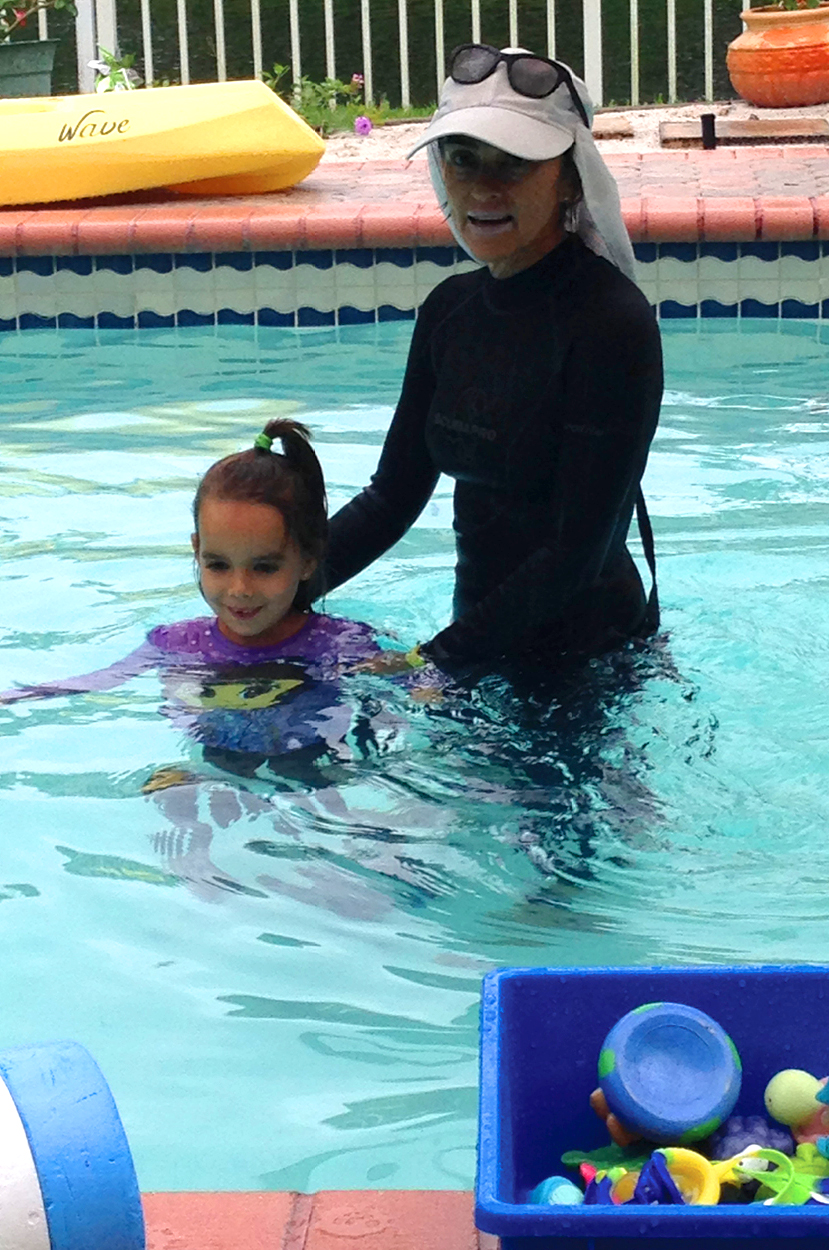Beneficios de la natación para los bebes.
Fuente: WABCswim.com
Para el niño:
Concientización y orientación en el agua.
Prevención de la hidrofobia (miedo al agua) la cual tiende a desarrollarse durante el crecimiento del niño.
Seguridad en y alrededor del agua.
La práctica de la submersión ayuda a prevenir el miedo cuando los bebés estan en el agua o a su alrededor reduciendo los riesgos de ahogo.
Oportunidad para fortalecer la relación con sus padres o guardianes.
Desarrollo de la confianza en si mismo y sentido de independencia.
Ayuda a sobreponer la ansiedad causada por la separación.
Promover en el niño el sentido del logro de objetivos.
Mejorar la estimulación sensorial en una atmósfera placentera.
La natación contribuye a la salud cardiovascular.
Los niños asmáticos se benefician con el ejercicio en el medio cálido y húmedo alrededor de la piscina.
Los bebés se relajan en el agua y el ejercicio mejora apetito el apetito y el patron de sueño.
Desarrollo del lenguaje:
Promueve la concentración y la capacidad de atención y comprensión.
Mejora su capacidad para seguir instrucciones.
Mejora el contacto visual.
Mejora el control de la respiración.
Las rimas infantiles ayudan a promocionar las habilidades de secuenciación y la conciencia del sonido, las cuales son importantes en el aprendizaje de la lectura.
La interacción en grupo desarrolla las habilidades sociales.
Desarrollo físico y motor
Todos los músculos se ejercitan cuando se esta en el agua.
Desarrollo del tono muscular y el balance.
Mejoramiento de la coordinación bilateral.
Promueve el movimiento de las manos hacia el centro, el cruce del centro al lado opuesto y eventualmente la coordinación bilateral.
Promueve la concientización del niño con su cuerpo.
Promueve la planificación de las habilidades motoras.
Promueve sus habilidades para la natación en una etapa posterior.
Benefits of Baby Swimming
Source: WABCswim.com
For the Child
Water awareness and water orientation.
Early introduction to water may prevent aquaphobia which is more likely to develop as a child grows older
Promotes safety in and around water.
Becoming acquainted with submersion may prevent fear and panic when in and around water thus reducing their chances of drowning.
Opportunity to bond with parent/care giver.
Develops self-confidence and encourages independence.
Helps to overcome separation anxiety.
Gives your child a sense of accomplishment and achievement.
Enhances sensory stimulation in a fun-filled atmosphere.
Swimming improves cardiovascular fitness.
Children with asthma benefit from exercise in warm moist air around pools.
Babies relax in the water and exercise improves their appetites helping them sleep better.
Speech and language development
Promotes listening, concentration and increases attention span.
Improves ability to follow instructions.
Improves eye contact.
Improves breath control.
Nursery rhymes improve ability to sequencing skills and sound-awareness which aids your child when learning to read.
Group interaction develops social skills.
Motor and physical development
Babies can exercise all muscles groups in water.
Improves and develops good muscle tone and balance.
Improves hand/eye and basis of bilateral co-ordination.
Encourages hands to midline, then crossing of midline and eventually bilateral co-ordination.
Improves your child’s special and body awareness.
Improves your child’s motor planning skills.
Improvement of swimming skills in preparation for swimming strokes.













